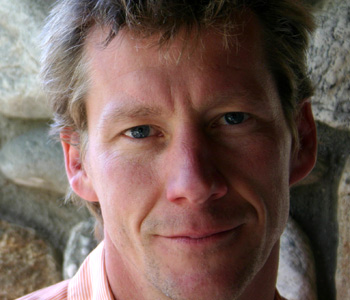Greg L. Warchol
Exploiting the Wilderness: An Analysis of Wildlife Crime
Temple University Press
208 pages, 6 x 9 inches
ISBN 978 1439913673
I set out to provide the reader with a detailed overview of the global illegal trade in African wildlife. The illegal trade involves the poaching, trafficking and consumption of common and endangered species. These include mammals, marine species, reptiles, birds and plants. I based my book on 12 years of fieldwork I did in Africa and the United Kingdom, and current research literature. I worked in nine east and southern African nations interviewing hundreds of individuals involved in monitoring and preventing different aspects of the illegal wildlife trade. I also did research in the UK as it is a destination country for African wildlife. The result is a book that provides a contemporary description of the nature of the wildlife trade including the species; the poachers, traffickers and consumers; the causes of these crimes; and past and current efforts to control and prevent the illegal trade.
Ecologists and biologists conducted much of the early research on poaching and trafficking with a focus on species survival and habitat preservation. I approached the problem as a criminologist, that is, one interested in the causes of crime, the behavior of offenders and solutions. I provide a detailed description of poachers including their methods and motivations. I also examine the role of intermediaries in the illegal trade. These are the key actors who move the illegal wildlife products from poacher to retailers. They are involved in a range of activities including recruiting poachers, supplying firearms, paying bribes to government officials, and smuggling wildlife to the end user nations. Finally, I describe the consumer nations for wildlife since their demand for these products influences the market. The focus is mainly on markets in Africa, Asia and the European Union – all major destinations for African wildlife.
In a chapter on causes of this crime, I start with a description of the impact of game parks and game laws established during the colonial period in Africa on traditional wildlife use practices of indigenous populations. I also examine what occurred in wildlife conservation following the end of the colonial era when many African nations transitioned to self-rule. In this next section, I provide the reader with a review of the application of modern criminological theory to wildlife offenses. These include the contemporary work on data-driven anti-poaching efforts based on situational crime prevention theory.
In a chapter on policing wildlife, I describe those individuals charged with protecting wildlife: the game or field rangers in Africa. My book offers a description of how African rangers are recruited, selected, trained and how they operate in the parks. I also compare and contrast the public sector rangers working in the national parks with their private sector counterparts who work as security in the private game reserves and farms of South Africa. As a comparison, I write about the U.S. model of conservation officers and game wardens at the state level.
I would like the reader to come away with a sound understanding of the nature of this problem, the actors involved in this crime, and the threat it poses to wildlife in Africa. I want to reach a broad range of readers interested in wildlife conservation Besides university professors and graduate students, I also want this work to encourage undergraduate students interested in conservation to pursue a career in the field, and to serve as a foundation for other criminologists to build upon with their research.
I discovered many interesting issues in my research into the illegal wildlife trade and will just mention three here. The German and British colonial governments in east Africa established the first game parks and game laws on the continent. These became models for conservation practices in other Africa nations. However, it affected rural Africans who had previously hunted and farmed on these lands for centuries that were now off limits. This resulted in both resentment and calls for land reform. When the colonial period ended in the decades after WW II, the new African governments in some nations promised to change the laws and restore citizens’ access to these lands. However, many failed to live up to this promise realizing that the game parks provided the government with revenue and the jobs in game departments would serve as a source of patronage. This has led to continued resentment among some rural Africans who view the parks as playgrounds for the wealthy with few benefits for locals.
Another interesting finding was how globalization in the last couple of decades inadvertently led to the expansion of wildlife trafficking. Transnational organized crime, which plays a major role in the illegal wildlife trade, quickly exploited relaxed border controls, express shipping services, international investment, electronic money transfer services and the use of the Internet to move and market wildlife. The same developments that would foster economic expansion in Africa were used by criminal enterprises to move more wildlife from source nations to consumer countries.
A very common issue I heard during my fieldwork was the problem of corruption in Africa. This problem permeated all levels of government from local police and park rangers to border control officials to high-level ministers. Accounts of rangers poaching wildlife or assisting poachers were commonplace. I found many instances of African police departments accused of providing firearms to poachers in exchange for money. Asian diplomats were apprehended at airports with rhinoceros horns and ivory in their possession many times. Corruption plays a major role in facilitating the illegal trade in wildlife.
I am often asked how I became involved in this work. I have long had an interest in wildlife and wildlife conservation. When I began my academic career as a university professor, I was researching drug trafficking and criminal victimization. I wanted to expand my area of expertise and began to examine the issue of poaching and trafficking of wildlife. I quickly found that there was very little criminological research in this subject. I had contacts in South Africa at a university who were also excited about exploring this problem. I received funding from a grant and began the first of a dozen overseas field research trips over about 12 years. We started with a project in South Africa and Namibia and more recently finished a project in Kenya. My work was among the very first studies of the illegal trade in wildlife done through the lens of criminology. I presented this work at many conferences and had numerous journal articles published when I was approached by Temple University Press about authoring a book about the subject. I ended up building a significant amount of expertise in this area.
I would hope that readers browsing the book would find the section on offenders and the section on solutions. Two highlights are the description of their motivations and methods, and the chart that offers a profile of offender type by species. One common view is that most poaching is done by subsistence hunters seeking food or money for survival. While that is a small part of it, much of the illegal wildlife trade is driven by greed and organized crime. Furthermore, military and paramilitary groups including some terrorist organizations have also been active in elephant poaching in southern and central Africa. I described this in detail in the chapter.
Another highlight of the book is the final chapter. Here, solutions to the illegal trade in wildlife are described and analyzed. These include methods to reduce the supply of illegal wildlife and the consumer demand in end user nations. The programs that I reviewed include some of the earlier efforts such as WINDFALL and CAMPFIRE in Zimbabwe, CARNIVORE in Zambia and the public ivory destructions in Kenya. More recent policies such as the Chinese and US prohibitions on ivory sales and ownership are covered in the chapter. Also described is the UK’s Buckingham Palace Declaration that is a public-private partnership between government and shipping companies to prevent wildlife smuggling.
Finally, I examined the hot topic of hunting-as-conservation or conservation-by-the-gun in this chapter. Public attention to this practice developed out of the so-called Cecil the Lion incident in Zimbabwe a couple years ago. In this case, the Zimbabwean government accused an American hunter and his South African guide of illegally killing a lion during a legal hunt. This led to a hotly debated discussion on trophy hunting. Proponents of trophy hunting argue that it is necessary since the revenue that results is used for conservation. Others contend that it is barbaric and just results in the best examples of a species being killed for a trophy. Even President Trump quickly reversed his recent decision to allow African elephant trophies to be imported into the U.S. citing the cruelty of the practice.
Elephant tusk of questionable origin offered for sale to the author in Mozambique

There are not many books describing the illegal wildlife trade. I hope that my work enlightens the reader about the nature and severity of this crime and what is done to control and prevent it. The news about poaching in Africa is often very discouraging. Recent reports of large-scale elephant and rhinoceros poaching can lead one to believe that these animals will disappear from nature. Wildlife populations do recover if poaching can be mitigated. Many new conservation initiatives, including those based on crime theory, can and are helping to prevent the problem. More young university professors beginning their careers are interested in this subject and exploring solutions. Some of the traditional criminological theories used to explain street crimes are being applied to explain green or conservation crimes.
I strongly hope that the book inspires students to become interested in wildlife conservation law and policing. I am using the book in my current university class on wildlife conservation criminology. I hope that it informs students about the problem of wildlife trafficking and encourages some to seek careers in this field, either with a government or nongovernmental agency.
Finally, I would like to have this book read by government policy makers. Wildlife crime is a highly lucrative transnational crime. It ranks in the top three or four types in terms of profit—tens of billions of dollars annually—for criminal enterprises. Some lawmakers may have the view that poaching just involves a few species in select nations. However, nearly any species that can be used for food, decoration, building materials, medicines, clothing, or as a pet is subject to illegal exploitation. The book helps explain how extensive this crime is. The loss of wildlife not only affects the species targeted for the trade, but it represents the loss of valuable economic assets for developing nations dependent on eco-tourism and natural resources.




We don't put paywalls. We don't distract you with ads. We don't sell your data.
Please help to keep this running!